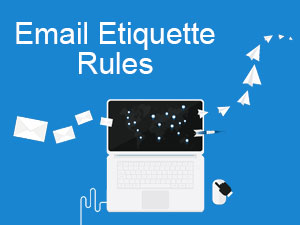which of these rules of etiquette exists at every workplace?
Which of these rules of etiquette exists at every workplace?
Even though internet content can be “deleted”, it’s never really gone, and the impression something creates can linger long after the offensive material is out of view https://allot-mvc.com/el-royale-casino/. Be sure to only share stuff online that you would be comfortable with your employer, child, coach, neighbor or parents seeing. This is not to say that you can’t express yourself, just tone down anything that might cause someone who knows you to do a double take. This way people are less likely to make inaccurate conclusions about you before they even have the chance to meet you in person.
Following this netiquette guideline is even more important if you’re actively looking for a job online. If prospective employers find outdated information on your professional networking page, they might assume that you don’t care enough about getting work.
One way to avoid sharing too much private information online is to ask yourself if you would have a problem with your boss, parents, or kids seeing that post now or at any point in the future. If the answer is yes, don’t post or send it.
When someone makes a mistake—whether it’s a spelling error or a spelling flame, a stupid question or an unnecessarily long answer—be kind about it. If it’s a minor error, you may not need to say anything. Even if you feel strongly about it, think twice before reacting. Having good manners yourself doesn’t give you the license to correct everyone else. If you do decide to inform someone of a mistake, point it out politely, and preferably by private email rather than in public. Give people the benefit of the doubt; assume they just don’t know any better. And never be arrogant or self-righteous about it. Just as it’s a law of nature that spelling flames always contain spelling errors, notes pointing out Netiquette violations are often examples of poor Netiquette.
If you are forwarding an email message, use BCC (blind carbon copy) rather than CC (carbon copy) when sending it to more than one person. This helps protect the privacy of all the other email recipients.
Club purchase that comes with rules of etiquette nyt
Here is the answer for the: Club purchase that comes with rules of etiquette crossword clue. This crossword clue was last seen on February 22 2025 New York Times Crossword puzzle. The solution we have for Club purchase that comes with rules of etiquette has a total of 8 letters.
The answer to “Club purchase that comes with rules of etiquette” in the New York Times puzzle February 22, 2025 is LAPDANCE (Across 58). Quite straight and simple! Complete your daily NYT challenge with this solution.
Christine Mielke has been an avid fan of word games and puzzles for over two decades. She loves to unscramble words, challenge herself to crossword puzzles and try out the latest word games. As a published author and database architect, it was natural for her to take her love for all things word games to the next level!

Here is the answer for the: Club purchase that comes with rules of etiquette crossword clue. This crossword clue was last seen on February 22 2025 New York Times Crossword puzzle. The solution we have for Club purchase that comes with rules of etiquette has a total of 8 letters.
The answer to “Club purchase that comes with rules of etiquette” in the New York Times puzzle February 22, 2025 is LAPDANCE (Across 58). Quite straight and simple! Complete your daily NYT challenge with this solution.
Rules of email etiquette
Relying on lots of em dashes, semi-colons, or parenthesis to explain a situation indicates that your email is better suited for a phone call or meeting. Don’t overuse unnecessary punctuation. Exclamation points are appropriate for specific situations like:
Before you click “Send,” ask yourself if you’d still send it if it would be published on the internet for all to see someday. If the answer is yes, go ahead and click the “Send” button. If it’s not, take another look at what you’ve written and consider.
This same strategy can be applied post-interview. Your first email is used to thank the interviewer for their time and to answer or respond to any issues that were brought up during the interview. A few days later, follow-up with a short one or two sentence email. Ten days after your interview, send one more note thanking them again for their time and asking if they have any follow-up questions for you or need any additional information. If you don’t receive a response to your third inquiry, it’s a “no.”

Relying on lots of em dashes, semi-colons, or parenthesis to explain a situation indicates that your email is better suited for a phone call or meeting. Don’t overuse unnecessary punctuation. Exclamation points are appropriate for specific situations like:
Before you click “Send,” ask yourself if you’d still send it if it would be published on the internet for all to see someday. If the answer is yes, go ahead and click the “Send” button. If it’s not, take another look at what you’ve written and consider.
This same strategy can be applied post-interview. Your first email is used to thank the interviewer for their time and to answer or respond to any issues that were brought up during the interview. A few days later, follow-up with a short one or two sentence email. Ten days after your interview, send one more note thanking them again for their time and asking if they have any follow-up questions for you or need any additional information. If you don’t receive a response to your third inquiry, it’s a “no.”
